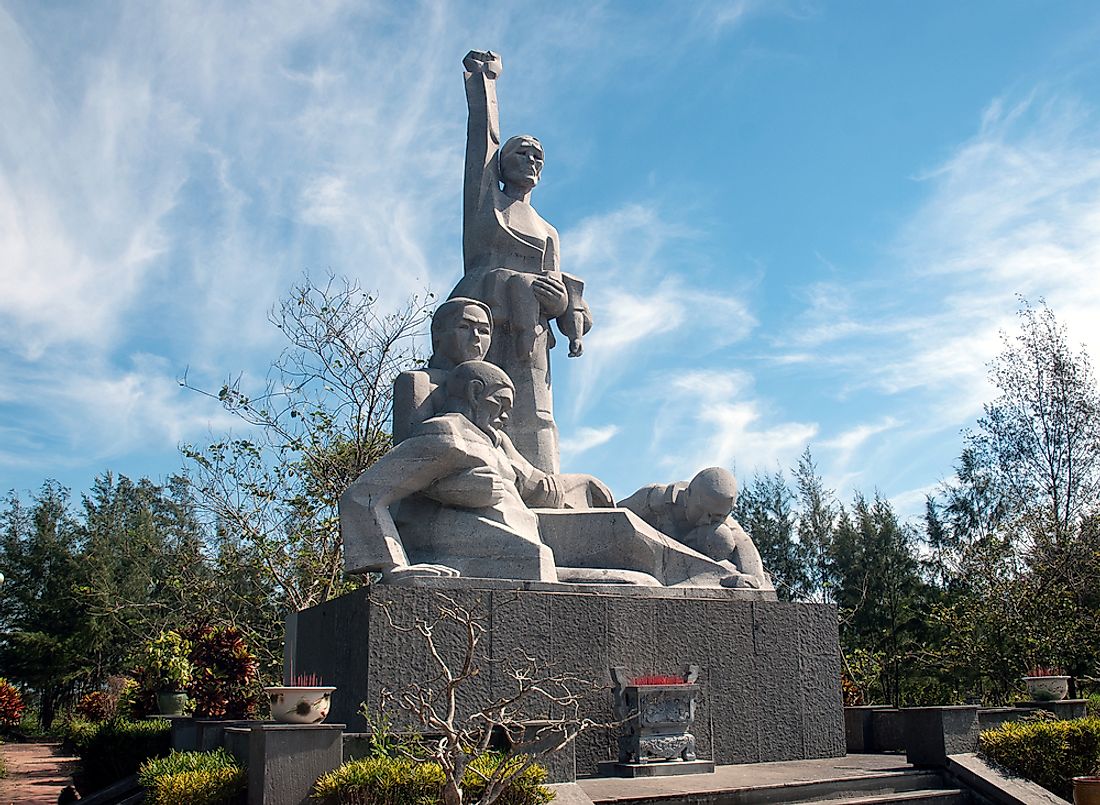My Lai Massacre - Vietnam War

5. BACKGROUND OF THE MASSACRE
The My Lai Massacre, formerly referred to as the ‘Pinkville Massacre’, is considered to be one of the most appalling acts of violence committed by American soldiers against civilians during the Vietnam War. The massacre, which took place in the My Lai hamlet of Son My village, situated in Quang Ngai province, in March of 1968 was precipitated by the Tet Offensive. The latter was a surprise attack carried out by the National Liberation Front, or NLF, soldiers that resulted in the deaths of over 28 American soldiers from the 11th Infantry Brigade. According to U.S. military intelligence given to the company to be involved in the massacre, members of the 48th Battalion of the NLF were hiding in Son My village preparing to engage in the anti-American engagements. The error in this information had grave consequences.
4. THE PARTIES INVOLVED
Charlie Company C of the 11th Infantry Brigade was sent to Son My Village to flush out and eliminate members of the 48th Local Force Battalion of the NLF. Prior to the massacre, morale among soldiers of Charlie Company C, led by Lieutenant William Calley, was depressingly low. The battalion was part of a U.S. Army-led operation, code-named ‘Muscatine AO’, to secure the village of Son My. A day before the attack on the My Lai hamlet, which was code-named ‘Pinkville’, the soldiers were ordered to kill any persons they found in the village. The order was based on the assertion that civilians would be in the market by 0700 hours (7:00 am), and anyone who remained in the village was an NLF sympathizer or member.
3. THE ATROCITIES
The attack began with the landing of helicopter gunships, used in the deployment of the over 100 soldiers of Charlie Company of the 1st Battalion, 20th Infantry Regiment, 11th Brigade of the 23rd Infantry Division into the area. Soldiers from the latter battalion were met with zero resistance and, according to reports, not a single shot was fired at the platoon. Having found zero enemy combatants in the village, the American soldiers rounded up the villagers, most of whom were women and children. The soldiers then executed the villagers and burnt their homes and livestock. The massacre would have gone on without intervention, had not Warrant Officer Hugh Thompson, Jr. and his crew flew over in a helicopter and witnessed the event. They quickly landed and forced the men on the ground to end the madness.
2. HORRID OUTCOMES
The exact number of civilians who died in the My Lai massacre remains unknown. However, estimates put the number at between 347 and 504. According to the memorial at My Lai, the number of people who died stands at 504 while, according to official U.S. military reports, an estimated 347 civilians died. The exact numbers may have been significantly higher, as the village was at the time inhabited by close to 700 persons. Charlie Company suffered zero casualties.
1. SIGNIFICANCE AND LEGACY
One year after the massacre, in November of 1969, the story of what had happened at My Lai was released to the public by investigative journalist Seymour Hersh. The story was received with uproar and outrage from American citizens who called for the withdrawal of American troops from Vietnam. The massacre and its subsequent revelations caused morale among American soldiers to plummet further, and widened the divides between the soldiers, the American public, and government officials over the U.S. policies regarding the nation’s involvement in the Vietnam War. In Vietnam, the incident was reported by Warrant Officer Hugh Thompson, a gunship pilot who had witnessed the atrocities committed by members of Charlie Company. This resulted in the cancellation of nearby operations that, as difficult as it is to fathom, could have ended with similar outcomes.
In the proceedings to follow an attempted cover-up of the event, Thompson would testify against the war criminals, and independent journalist Seymour Hersh, working for Dispatch News Service and affiliated with the Associated Press, would be awarded the 1970 Pulitzer Prize for International Reporting "for his exclusive disclosure of the Vietnam War tragedy at the hamlet of My Lai." Unfortunately, this dark stain on the fabric of U.S. history will never be removed. We should therefore view it as a warning of how power, fear, and confusion can cause normal people to carry out heinously drastic measures in times of distress, so that future generations of soldiers will not approach such levels of evil.











